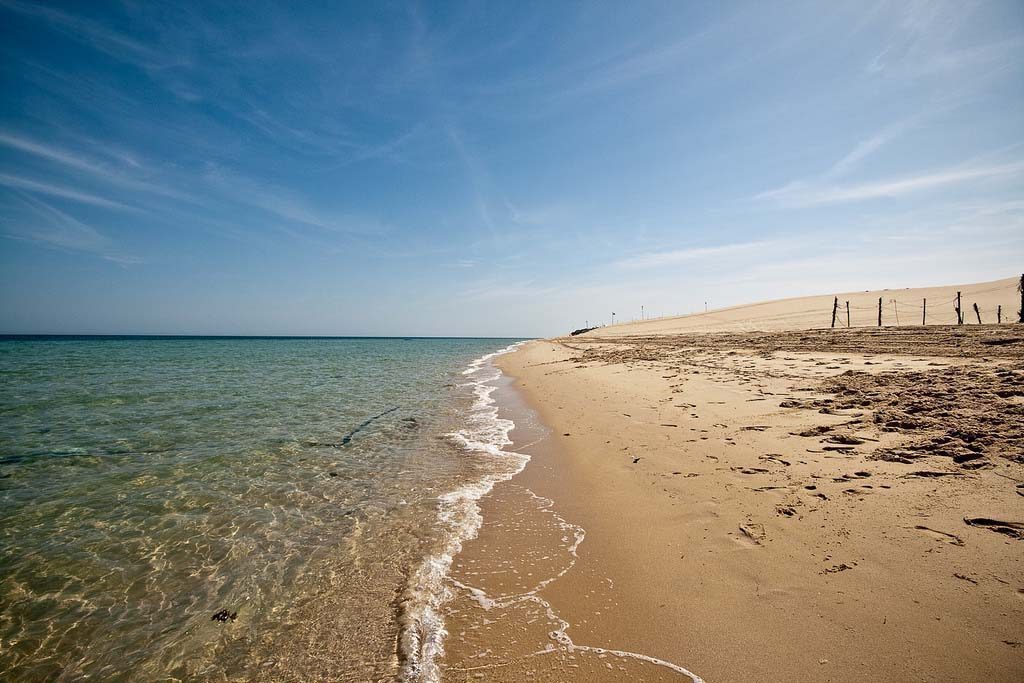
In a bid to improve water safety along Qatar’s coastline, the State Cabinet has given its nod to a new draft law that would require authorities to set up designated swimming zones on Qatar’s beaches.
Under the proposed legislation, signs will be installed informing the public where they can swim – as well as where the activity is prohibited – in addition to establishing hours when swimming is permitted.
The beaches and islands department of the Ministry of Municipality and Urban Planning (MMUP/Baladiya) will be responsible for creating the safe swimming areas on the country’s beaches. It will also lead a public awareness campaign about the importance of swimming only in designated areas and at the permissible times, according to Qatar News Agency (QNA).
The draft law, which was approved during the Cabinet’s regular meeting yesterday, will apply not only to open coastline, but to “all tourist facilities including clubs, resorts and private areas overlooking the sea.”
According to QNA, the Cabinet stipulated that these will be obliged to provide “security requirements and safety guidelines,” although it does not define what these are.
A spokesman for the Intercontinental Hotel Doha, which has a 500 meter private beach in its complex, said it already undertakes a number of safety measures, including having a clearly marked swimming area in the sea, lifeguards and security guards on patrol, a flag system warning guests of the weather and water conditions, as well as other signage on the beach.
There are no details yet on how this law would be enforced, and what the penalty would be for swimming in no-go areas or out of hours.
Improving safety
The new measures are believed to be an effort towards cutting the number of cases of drowning in Qatar. In recent years, there have been around 20 such incidents each year.
A global report on drowning, published by the World Health Organization (WHO) last year, noted that Qatar had 1.2 deaths by drowning per 100,000 people, based on 2011 figures. Among the report’s recommendations was that each country should set up a national water safety plan.

Although a relatively small state, Qatar has 563 km of coastline and the vast majority is undeveloped. Weekend beach excursions are a popular activity for expats and nationals, particularly in the spring and autumn.
There are numerous private beaches as well as resorts and hotel beaches around Qatar, and many of the latter have roped-off safe swimming areas, lifeguards and safety equipment nearby.
While some of the designated family beaches, such as at Al Wakrah, have marked swimming areas with rock boundaries, the “wild” beaches do not. While shallow, Fuwairit beach is popular with a host of families as well as water and beach sports enthusiasts and becomes very busy in the peak months.
During the Eid al Fitr holidays last year, three people drowned on Qatar’s beaches. Two Kenyan nationals had been swimming at Al Wakrah beach and got into difficulties with strong tides. Separately, another man died at Sealine beach in an unrelated incident.
In October 2013, two Filipino expats drowned while crabbing in Al Khor on the first day of Eid al-Adha. They too had been caught by the rising tide, while two of their friends eventually made it to safety.
Meanwhile, in June 2012, the deaths of three brothers at Ras Abu Fantas beach at Al Wakrah prompted a Qatar Coast Guard official to warn against swimming at the site.
The official cited strong undercurrents and an uneven seabed and his warning echoed residents’ complaints that there were no signs advising people of the dangers of swimming at the beach.
Children at risk
Most drowning victims are children under the age of five, according to WHO, and in 2012 the public safety campaign Kulluna (“all of us”) focused on spreading awareness of water dangers and not leaving children unattended while at the beach, swimming pool or around any water source.
According to Kulluna, the total number of child deaths from drowning is rising annually. It is the most common cause of accidental death in Qatar among children under the age of four, and 90 percent of drowning cases involve children under the age of 10.
Its advice for water safety while at the beach includes designating an adult “water-watcher” who can keep an eye on children, even if they can’t swim; ensuring non-swimmers wear life-jackets and are always within arm’s reach; and teaching children about the potential dangers of the seaside, including changing currents, uneven surfaces and ocean undertow.
Thoughts?







